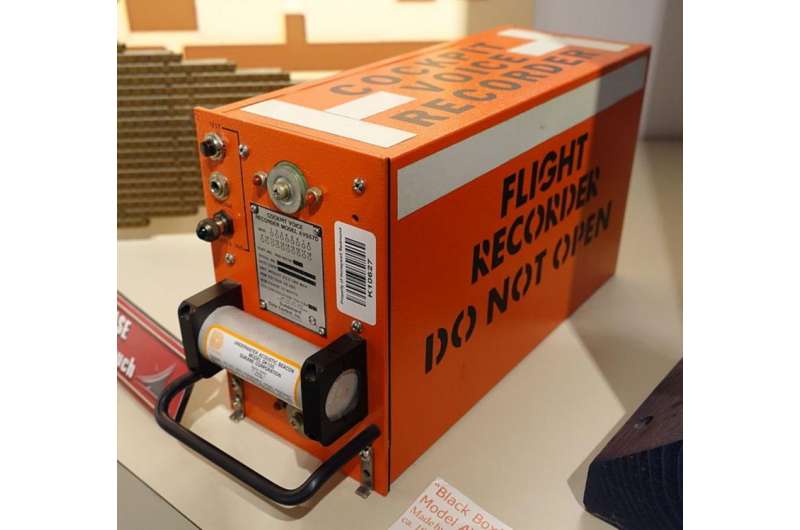No aircraft is too small to kill – fitting flight recorders could prevent further deaths

When a police helicopter plunged into the Clutha pub in Glasgow city centre two years ago, killing ten, an accident investigation was launched to find out what happened and why – a process that is essential to preventing future accidents and loss of life. But smaller aircraft are not required to carry flight data recorders – the black box so vital to air crash investigations. So while the recently published report into the crash revealed some of the reasons behind, there were details – potentially vital details – that couldn't be known because they weren't recorded. It's about time this changed.
The Air Accident Investigation Branch (AAIB) report recorded that the Strathclyde Police Eurocopter EC135 with a crew of three took off from Glasgow Heliport at 8:44pm in order to conduct missions between Glasgow and Edinburgh. The captain was an experienced pilot aged 51, who had flown RAF helicopters in Afghanistan, Iraq, Bosnia and Northern Ireland before retiring from military service and flying helicopters for the police.
At about 10:06pm the helicopter arrived over Bothwell in Glasgow with about 122kg of fuel remaining. Local rules require that a fuel "urgency" (the level below an "emergency" or "Mayday" call) be declared if levels fall below 100kg, and landing should be quick. Because the fuel pump switches that transfer fuel from a reserve to the main fuel tanks were turned off, a fuel warning went off in the cockpit – a warning the pilot cancelled five times.
At about 10:22pm there was 73kg of fuel left in the reserve tank, the helicopter's two engines failed 45 seconds apart and the pilot was forced to attempt an emergency landing. This was handled poorly for reasons including the helicopter's low altitude, the darkness of the night, and the failure of the radio-altimeter, a device that in this model of helicopter relied upon engine power to tell the crew the exact distance between the helicopter and the ground below. The helicopter crashed at high speed into the roof of the Clutha Bar, killing the crew and seven others in the pub.
Unanswered questions
The AAIB established the technical facts of the accident by examining memory chips from various aircraft electronics that survived. This took a very long time, and some uncertainties remain.
Why would a hugely experienced professional helicopter pilot leave the fuel transfer pumps turned off, cancel five low fuel warnings and continue to fly his helicopter below safety minimum fuel levels? Did his experienced police observers challenge him about the warnings he kept cancelling? Critically, we know nothing about what was happening in the cockpit: when and why the pilot cancelled the audible warnings, what was discussed, and whether any action was taken. We don't know the answers to these questions, nor can we ever know.
There have been at least 12 police aircraft crashes in Britain since 1985, eight of them fatal, one air ambulance helicopter crash, and several other small helicopter crashes, such as one in central London. None carried the standard cockpit voice recorder to record cockpit discussions or the flight data recorder that records data about the aircraft's systems and which are required for larger aircraft. Both could have assisted the investigation.
The AAIB have repeatedly recommended that recorders be fitted, and did so again with this report. A flight recorder is an available option for the EC135 model helicopter, but as the helicopter has a maximum take-off weight of 2,910kg it falls below the legal limit that requires crash-proof flight recording equipment to be fitted, which is 3,175kg.
Learning from mistakes
The loss of Air France flight 447, an Airbus A330, in the South Atlantic in June 2009 was, initially, an inexplicable crash. But once the cockpit voice recorder had been retrieved from ocean floor it revealed that the crew misunderstood the conditions they were in and consequently mishandled the jet, leading to the crash and the deaths of 228 people.
Flight recorders are a tried and tested technology fitted to many aircraft. While systems will be necessarily simpler than that on an airliner, the only conceivable reason that smaller aircraft do not carry them is to save money. Yet their absence hampers investigation of this and other crashes, and prevents us from understanding what occurred – something that could cost more lives in the future.
As with the Strathclyde Police helicopter, the same is true of most smaller military aircraft too. But following a tragic Lynx helicopter training crash in 2014, the Ministry of Defence changed its position and now requires flight recorders to be fitted on all military aircraft, irrespective of size. The government must force other operators to follow suit.
Aircraft accidents happen, but accidents and risks can be minimised by identifying the causes of accidents and ensuring that the lessons learned are carried forward in changes to equipment, training, procedures, or the law. We need legislation or regulation to close these loopholes and ensure proper flight recorders are mandatory on all commercial and public service aircraft, as the AAIB has repeatedly called for, and the government and aircraft operators continue to ignore.
Source: The Conversation
This story is published courtesy of The Conversation (under Creative Commons-Attribution/No derivatives).
![]()





















